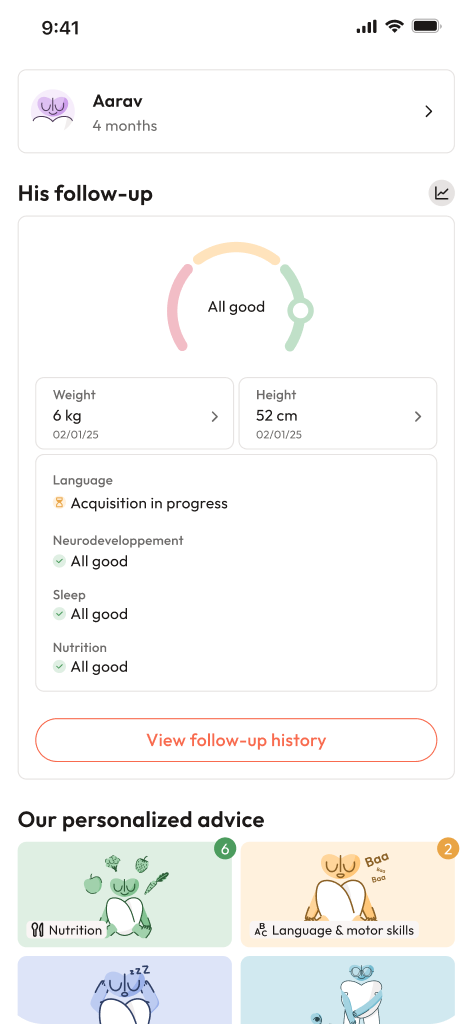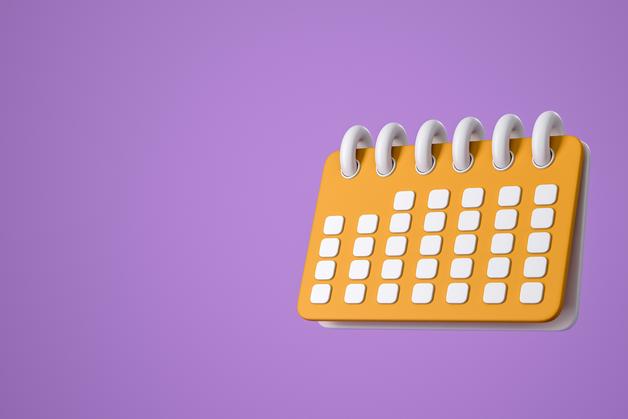When the topic of Water breaking surfaces in conversations around childbirth, it triggers an immediate flurry of questions among parents—anxiety, excitement, and curiosity all wrapped in a single moment. At the heart of these questions lies an urgent quest: will you recognise the sign, and, perhaps more importantly, will you know what to do? For some, the idea summons images of a dramatic, movie-like gush, while others dread a slow, confusing leak, clouded by uncertainty. Is it amniotic fluid or simply increased vaginal discharge? Will labour start immediately, or does a long wait lie ahead? The well-being of both baby and mother hangs in the balance—timely actions are non-negotiable. This topic interlaces medical jargon—amniotic sac, PROM, membrane rupture—with the deeply personal, almost sacred experience of giving birth. In the following, expect to unravel the many forms Water breaking can take, understand the subtle differences with other leaks, learn the warning signs that mean “go to the hospital now”, and, above all, walk away equipped to respond with knowledge and confidence.
What does Water breaking actually look and feel like?
You might imagine a tidal wave, but Water breaking is often less dramatic — sometimes a sudden gush of warm, clear or pale yellow liquid, sometimes a barely noticeable slow trickle. Both are possible, both equally meaningful. What matters: the fluid is typically uncontrollable, escaping even if you try to tense your pelvic muscles. Quite unlike leaking urine, which you can usually “hold”, amniotic fluid keeps on coming. There might be a “pop”—a strange little sensation—just before the leak starts. Some mothers notice it in the shower, others waking up to a damp bed, while for a few, it happens in the middle of a regular day.
Concerned about distinguishing it from other leaks? Here’s a science-backed approach: place a sanitary pad (never a tampon) and observe. Amniotic fluid is usually clear, possibly with a faint sweet odour. Any shade of green, brownish, yellowish, cloudy, or pink, or any unusual, strong smell? Time to contact your care provider straightaway. Sometimes, especially if the head isn’t fully engaged, the leak can be continuous or stop-start, but persistent wetness—especially when relaxed and lying down—remains a significant clue.
When does Water breaking usually happen?
With all the anticipation and waiting—will it happen before contractions, during early labour, or not until you’re deep into active labour? Expect Water breaking most commonly to occur between 37 and 42 weeks of pregnancy, either before or during the first stage of labor. Yet, surprises abound: sometimes the sac ruptures before week 37—what doctors refer to as preterm pre-labor rupture of membranes (PPROM), carrying risks of prematurity, infection, and the need for extra medical observation. Occasionally, especially in multiple pregnancies, a sac may rupture at different moments, leading to more than one episode of Water breaking.
And what if nothing happens after? It is surprisingly common for contractions to lag behind the Water breaking event by several hours. Healthcare teams tend to wait 12–24 hours before discussing induction—not always, but quite often—balancing the risk of infection with the need to let things start naturally.
How to tell Water breaking from other types of leaks
You’re not the only one asking, “Is this it, or something else?” Late pregnancy comes with a growing list of possible secretions. Vaginal discharge: white, sometimes creamy, thick or sticky, typically increases as delivery approaches, but pausing and restarting at will—this isn’t Water breaking. Mucus plug loss? Looks like thick jelly, tinged sometimes with streaks of blood, but it doesn’t keep flowing. Urine? Usually yellow, distinctive in odour, can be controlled—just squeeze those pelvic muscles. Water breaking? It has a mind of its own, persistent, slippery, sometimes soaking through pads or onto bedsheets, and—importantly—hard to stop.
If confusion persists, home testing using a pH strip can offer a hint (amniotic fluid is alkaline), but do not rely on this alone if there’s any doubt. Better to err on the side of caution and speak to a healthcare provider promptly.
What triggers Water breaking?
Rarely is there a single, simple explanation. For most, Water breaking happens as a normal part of late pregnancy: natural weakening and stretching of the amniotic membranes under the pressure of growth and fetal movement. But several risk factors can play a role:
- Previous premature rupture in another pregnancy.
- Infection or inflammation around the membranes (chorioamnionitis, endometritis).
- Second or third trimester bleeding.
- Low maternal weight or nutrition deficiencies.
- Cigarette smoking.
- Use of certain medications, for example, some antihypertensives.
- Shortened cervix (seen on ultrasound).
- Multiple pregnancies, where the uterus is stretched even more.
- Rare—trauma to the abdomen or deliberate rupture (amniotomy) in hospital settings.
Add to this the strong, consistent contractions or sudden baby movements that put extra pressure on the sac, and the puzzle is complete—though in many cases, no exact cause is found.
Potential complications: What comes after Water breaking?
The rupture of that protective sac increases vulnerability to bacteria travelling upwards from the vagina—raising the risk of infection over time, especially if many hours pass before delivery. The most commonly referenced infections are chorioamnionitis and endometritis—inflammation and infection of the membranes and uterine lining. For those experiencing PPROM, preterm birth becomes a genuine concern, with babies potentially facing breathing difficulties as their organs may still be developing.
Rarely, there’s a chance of umbilical cord prolapse, where the cord slips below the baby and can become compressed—a situation that requires immediate hospital attention because it affects oxygen delivery to the baby. Another risk: oligohydramnios, or very low amniotic fluid. This state can limit baby’s movements and sometimes signals fetal distress, evident in abnormal heart rates or reduced movements.
What steps should parents take when Water breaking occurs?
Panic rarely helps; information does. Here’s an immediate action plan, directly from expert practice:
- Stay calm. Note the exact moment Water breaking happened and the appearance, amount, and odour of the fluid.
- Practice hygiene: Immediately wear sanitary pads (never tampons), change into clean underwear, and wash hands.
- Avoid baths, swimming, or intercourse, which can raise the risk of infection.
- Monitor for danger signs: Fever, heavy bleeding, changes in the baby’s movement, or fluid that is green, pink, or foul-smelling demand swift medical attention.
- Contact your doctor or maternity team without delay. Have your observations handy: what time, what colour, any pain, and current fetal movements.
If you’re not close to a hospital, or it’s the dead of night, don’t wait until morning. Better to be checked and reassured than risk unnecessary complications. In hospital, assessment may involve pH testing, monitoring the baby’s heart, and sometimes ultrasound scans. Decisions about induction, antibiotics, or specialist treatments will always be tailored to you and your baby’s individual situation.
If labour doesn’t follow Water breaking right away
No need to stare at the clock with worry—contractions can take their own sweet time. Most providers watch and wait up to 24 hours, especially if there are no infection signs. During this period, medical teams will monitor maternal temperature, pulse, fetal heart rate, and fluid characteristics, ensuring that any signs of trouble are caught early. In some cases, particularly if labor fails to start or if infection risk grows, induction with medicines may be recommended. For preterm Water breaking, certain interventions—antibiotics to ward off infection, corticosteroids to boost baby’s lung maturity—are often administered to improve outcomes.
Variations in Water breaking: Not always dramatic
“Will I definitely know the moment my water breaks?” Not always. Membrane rupture can be loud or discreet, a flood or a drip. Sometimes the fluid escapes from a mid-level or high-up tear, leading to intermittent or mild wetness. What’s unwavering: any green, brown, pink, cloudy, or pungent-smelling fluid raises a red flag, especially if accompanied by fever, reduced baby movements, or pain. Such observations—timed, described, and shared with caregivers—remain the cornerstone of safe, effective decision-making.
Practical advice for families: Preparing for the moment
The days or weeks leading up to Water breaking lend themselves to nervous anticipation. Preparation reduces anxiety. Once you notice any leak:
- Write down times, fluid details, and how you feel.
- If feeling up to it, a quick shower and changing into easy, comfortable clothes can refresh and settle nerves. Eat a light meal unless advised otherwise.
- Avoid anything inside the vagina—no baths, no intercourse.
- Let someone in your network know what’s happening.
- Have your hospital bag packed: medical records, insurance card, loose clothing, large pads, essentials for both you and the baby, and any regular medications.
Little steps like these transform uncertainty into readiness.
Myths and media and Water breaking
Entertainment often shows Water breaking with pure drama: a tidal wave in a supermarket, instant labour in a taxi. Reality shatters such myths: slow, non-stop trickles are more common, and sometimes medical staff rupture the membranes during labor for specific reasons. Be prepared for variety—not only in the fluid’s pace but also in its timing. Reliable information, observation, and responsive action beat TV tropes every time.
Supporting emotional wellbeing during Water breaking
A little anxiety? Completely normal. Moments like Water breaking stir emotions ranging from surprise to joy to uncertainty. Look to your support system, discuss your birthing preferences with your care provider, and adopt small, soothing routines: deep breathing, music, or simply preparing your environment. Openness in communication, both with friends/family and healthcare professionals, provides a sense of control during this pivotal period.
Key Takeaways
- Water breaking can be abrupt or subtle, but always monitor fluid color, odour, and volume.
- Any green, pink, brown, cloudy, or unpleasant-smelling fluid, or unusual symptoms, require immediate medical attention.
- Water breaking before 37 weeks needs urgent assessment due to risks for both parent and baby.
- Maintain hygiene and keep close communication with your care provider—your observations are invaluable.
- Health professionals are always there to support you and your baby—seeking advice promptly keeps everyone safe.
- For tailored support, guidance, and child health resources, explore the Heloa app for personalised advice and free child health questionnaires.
Questions Parents Ask
Can you prevent your Water breaking early?
Not always—sometimes, the membranes are destined to rupture despite every good habit. What helps: regular prenatal check-ups to spot risk factors early, balanced nutrition, adequate hydration, stress management, and avoiding smoking. Reducing genital infections by following proper hygiene can also be protective. But remember, some things remain outside anyone’s control, so always contact your medical team if you observe any unexpected leaking.
How long can you wait to deliver after your Water breaking?
Timeframes differ, but generally, labor is expected to start within 12 to 24 hours of Water breaking. If no contractions begin naturally and the risk of infection increases, medical teams often recommend labour induction. Each family’s situation is individualised by your provider, considering baby’s well-being, your comfort, and the progress of pregnancy—rest assured, you will never be left alone in decision making.
What should you pack in your hospital bag when expecting Water breaking?
Essentials include: health records and insurance details; loose, comfortable clothing; extra large sanitary pads; toiletries; charger for your phone; essentials for your baby such as clothing and diapers; and, if expecting a longer stay or earlier visit, any regular medicines. Having this bag ready before the final weeks helps bring calm when Water breaking actually occurs.
Is it true that Water breaking always means immediate labour?
Not really. Sometimes contractions start quickly, but at other times hours may pass before labor kicks in fully. While most deliver within 24 hours after Water breaking, induction is discussed if labor doesn’t start to prevent possible infection. Your care provider will keep you informed and safe throughout.
Further reading:









